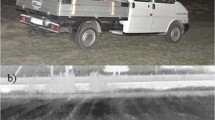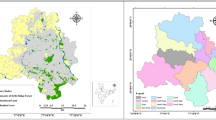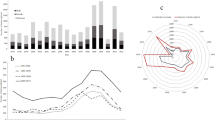Abstract
A USEFUL summary of census methods for mammals has been given by Dice1. Apart from those which involve killing the animals the following types have been used: counts of droppings, tracks, homes, or the animals themselves ; live trapping followed by marking and releasing. Live census methods for rats have not, except in ship deratization work, been well developed along these or other lines. Droppings are the most reliable signs used by inspectors on board ship2; and their estimates of infestation usually check very closely with numbers found dead after fumigation3. The operation, however, is a highly skilled one, and since allowance must be made for the type of food and rate of desiccation of the droppings, probably cannot well be applied elsewhere. Tracks and runways in mud, dust, snow, etc., show rat distribution but give little indication of numbers. A white powder such as plaster-of-Paris is useful for showing up footprints. Homes. In habitats such as hedge banks a count of holes may be made; but in buildings the number is seldom related to the density of the rats. Nests of Rattus rattus subspecies can be seen in the trees in Hawaii4,5 but nests of brown rats are not as a rule easily found. Brown rats themselves are largely nocturnal, and no representative fraction of the population is likely to be seen (on ships not more than one in twenty)2 except by destruction of the habitat or by bolting the rats with gas or ferrets. (The method is not good in premises such as shops.) Live trapping, marking and releasing has been carried out at this Bureau, but involves a good deal of work and technical difficulty. Other signs of the presence of rats include their odour, damage to food and structures, the black, oily smear left along runways and an occasional dead rat2.
This is a preview of subscription content, access via your institution
Access options
Subscribe to this journal
Receive 51 print issues and online access
$199.00 per year
only $3.90 per issue
Buy this article
- Purchase on Springer Link
- Instant access to full article PDF
Prices may be subject to local taxes which are calculated during checkout
Similar content being viewed by others
References
Dice, L. R., J. Wildlife Management, 5, 398 (1941).
Williams, C. L., Publ. Hlth. Rep. Wash., 47, 765 (1932).
Peirce, E. R., Med. Off., 43, 222 (1930).
Dopmeyer, A. L., Publ. Hlth. Rep. Wash., 51, 1533 (1936).
Pemberton, C. E., Bull. Hawaii. Sug. Ass. Ent. Ser., No. 17, 1–46 (1925).
Doty, R. E., Hawaii. Plant. Rec., 42, 39 (1938).
Author information
Authors and Affiliations
Rights and permissions
About this article
Cite this article
CHITTY, D. A RELATIVE CENSUS METHOD FOR BROWN RATS (RATTUS NORVEGICUS). Nature 150, 59–60 (1942). https://doi.org/10.1038/150059a0
Issue Date:
DOI: https://doi.org/10.1038/150059a0
This article is cited by
-
Parameters for assessing commensal rodent populations in rural ecological conditions
Proceedings: Animal Sciences (1979)
Comments
By submitting a comment you agree to abide by our Terms and Community Guidelines. If you find something abusive or that does not comply with our terms or guidelines please flag it as inappropriate.



